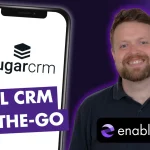Email marketing tips to boost inbound leads
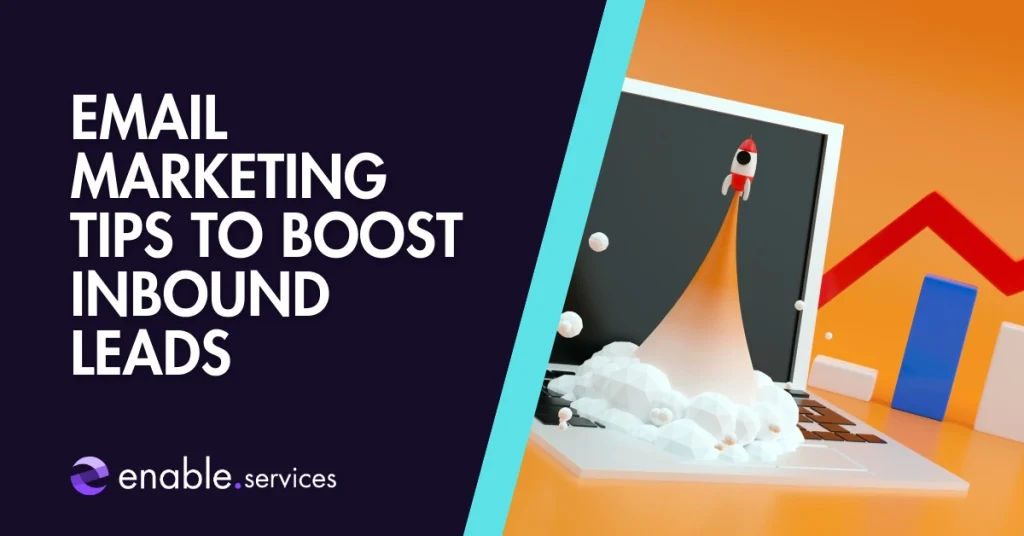
Email marketing is more than just a communication tool. When used effectively, it’s one of the most powerful drivers of inbound leads. Unlike cold outreach, inbound marketing brings prospects to you by delivering valuable, timely, and personalised content that meets them where they are in their buying journey.
In this blog, we’ll explore how smart email strategies can attract, engage, and convert leads with measurable success.
What are the 5 ts of email marketing?
The 5 ts; Targeting, Timing, Tailoring, Testing, and Tracking, are the backbone of any email campaign. There is no one set working rule for guaranteed results, but we’ll discuss how you can use the five points below to have the best chance of boosting your inbound leads.
- Targeting ensures your emails reach the right people.
- Timing gets your message in front of them when they’re most likely to engage.
- Tailoring means sending content that resonates with their needs.
- Testing helps refine and improve performance.
- Tracking provides insights to continually optimise.
Together, these tactics work to increase engagement and drive qualified inbound leads into your pipeline, without the need for outbound pushing.
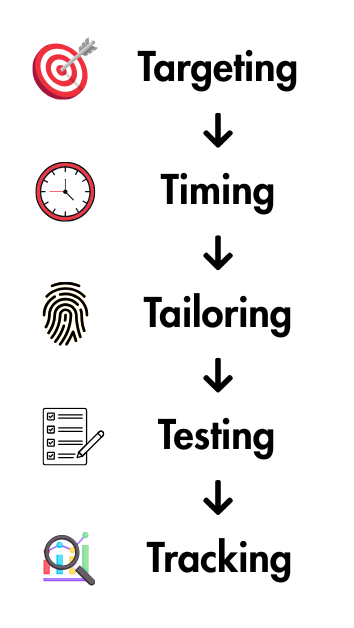
How often should you send marketing emails?
Keeping an appropriate gap between email communications is vital to making sure potential leads don’t get annoyed or even unsubscribe from your marketing content.
Knowing how often it is too often to send marketing content to your contacts can be tricky. Arguably, the largest varying factor for this is industry.
Let’s say you’re a fast-changing fashion brand that receives new stock daily. In this case, you’ll likely need to send content more often to keep potential leads up-to-date with new releases and products. However, if your company offers architecture consultancy, daily communications will likely be far too pressuring for the service at hand and won’t fit the brand perception.
Your potential leads will also be more likely to open frequent marketing communications if they have expressed interest in your product or service. This can be done by adding them to a segment upon sign up to receive communications from your brand, or by adding preference options to your existing emails. This allows individuals to set what type of content they would like to receive and how frequently they want to receive it, meaning it’s all on the end users terms.
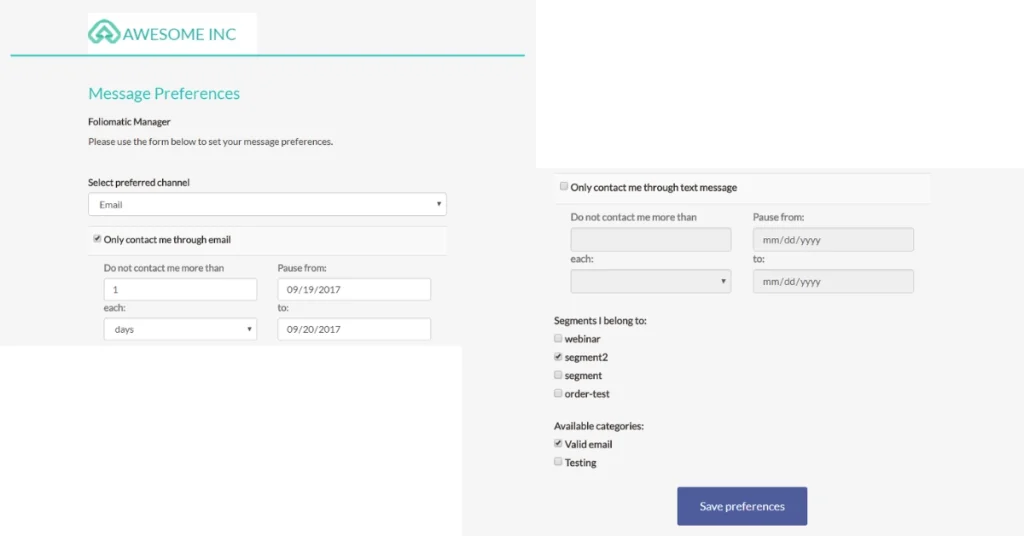
What is the best time to send your marketing emails?
Timing can make or break your email performance. A well-crafted email sent at the wrong time can easily be overlooked, while the same message sent during a peak engagement window could convert a passive reader into a new lead.
Although it’s hard to know when would be the best time to send email communications to your targets, it has been identified that for B2B marketing communications mornings and early afternoons are the most effective times to send emails. Between 9-11 am and 1-3 pm have been found to be times where people have the most time to read emails and not just skim over them.
In B2C email marketing, the traditional 9–5 window often isn’t the most effective time to engage your audience. Instead, evenings, particularly Fridays, tend to perform better for B2C as consumers begin thinking about weekend purchases. In fact, sending emails over the weekend can also yield strong engagement, as this is when the majority of your B2C targets have the most time for browsing, shopping, and exploring new offers sent to them.
However, it’s important to find what works best for you. A great way to test what days/times work best for you is to use A/B testing to experiment with send times and analyse what generates the highest open and click-through rates. This kind of optimisation helps you capture attention at just the right moment, often the difference between a missed opportunity and a new inbound lead. Find out more about A/B testing.

One standout feature of the email marketing automation tool Mautic is its ability to optimise send times for each individual contact. By selecting the “optimal for contact” setting within a campaign, Mautic analyses past engagement data to automatically send emails at the time each recipient is most likely to engage within a twenty four hour or seven day period. This personalised timing helps maximise open and click-through rates, ensuring your content reaches your leads when they’re most receptive to receiving marketing content.
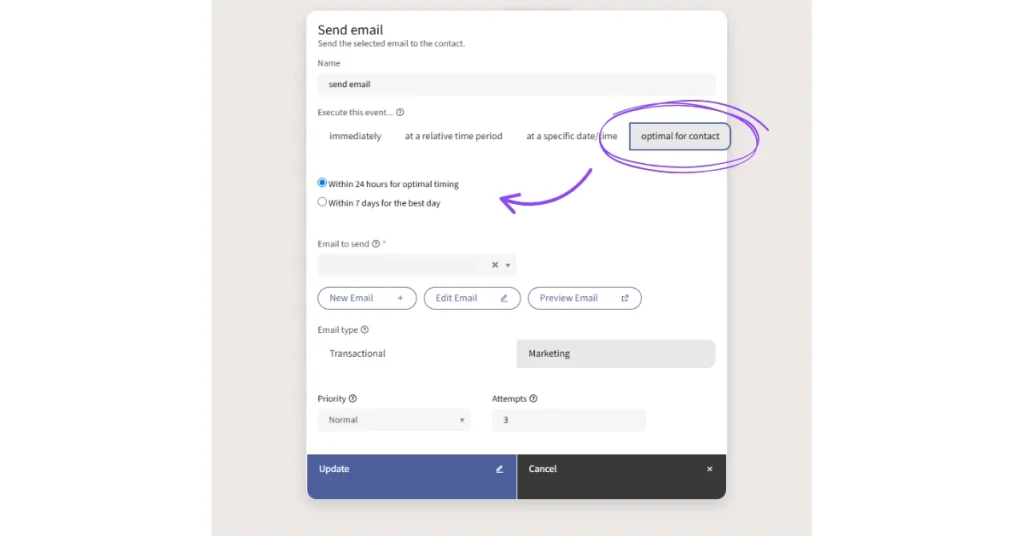
What is the best type of content to send via email marketing?
Not all email content drives results, especially when your goal is to generate inbound leads. The emails that perform best are the ones that offer genuine value. Whether it’s educational content, product updates, customer success stories, or exclusive promotions, the right message can turn general curiosity into conversions.
Segmenting your audience and tailoring content to their interests keeps your emails relevant and personal. If someone’s shown interest in a specific service, they shouldn’t be receiving content that doesn’t apply to them. Mixing up your format and messaging also keeps your audience engaged and prevents message fatigue. Sometimes, all you need is a fresh take on a product or service to spark curiosity and transform a target into a lead.
How to best track campaign data
Tracking results is what turns your email marketing into a lead-generating machine. Without data, you’re guessing. With it, you’re building smarter campaigns that continually improve. Monitor open rates, click-throughs, conversions, and engagement trends to learn what drives leads, over time this allows you to refine your subject lines, layouts, calls-to-action, and content for maximum impact.
While spreadsheets can give you a snapshot, a CRM system such as SugarCRM gives you full visibility. With built-in automation and real-time reporting, you can quickly see what’s working, segment audiences effectively, and attribute leads directly to campaigns, empowering your team to focus directly on what is driving results.
UK email marketing consultants enable.services
Knowing where to start when it comes to a software which suits your needs and support that you can trust can be tricky to identify. Having nurtured multiple businesses into confident email marketing experts with the correct software for them, we pride ourselves on making sure you have everything you need to get the most out of email marketing.
Check out an overview of our in-house email marketing solution, Mautic, in the video below. Or contact us to learn more.



